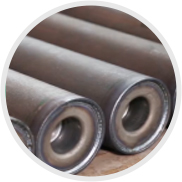 Afrikaans
Afrikaans  Albanian
Albanian  Amharic
Amharic  Arabic
Arabic  Armenian
Armenian  Azerbaijani
Azerbaijani  Basque
Basque  Belarusian
Belarusian  Bengali
Bengali  Bosnian
Bosnian  Bulgarian
Bulgarian  Catalan
Catalan  Cebuano
Cebuano  Corsican
Corsican  Croatian
Croatian  Czech
Czech  Danish
Danish  Dutch
Dutch  English
English  Esperanto
Esperanto  Estonian
Estonian  Finnish
Finnish  French
French  Frisian
Frisian  Galician
Galician  Georgian
Georgian  German
German  Greek
Greek  Gujarati
Gujarati  Haitian Creole
Haitian Creole  hausa
hausa  hawaiian
hawaiian  Hebrew
Hebrew  Hindi
Hindi  Miao
Miao  Hungarian
Hungarian  Icelandic
Icelandic  igbo
igbo  Indonesian
Indonesian  irish
irish  Italian
Italian  Japanese
Japanese  Javanese
Javanese  Kannada
Kannada  kazakh
kazakh  Khmer
Khmer  Rwandese
Rwandese  Korean
Korean  Kurdish
Kurdish  Kyrgyz
Kyrgyz  Lao
Lao  Latin
Latin  Latvian
Latvian  Lithuanian
Lithuanian  Luxembourgish
Luxembourgish  Macedonian
Macedonian  Malgashi
Malgashi  Malay
Malay  Malayalam
Malayalam  Maltese
Maltese  Maori
Maori  Marathi
Marathi  Mongolian
Mongolian  Myanmar
Myanmar  Nepali
Nepali  Norwegian
Norwegian  Norwegian
Norwegian  Occitan
Occitan  Pashto
Pashto  Persian
Persian  Polish
Polish  Portuguese
Portuguese  Punjabi
Punjabi  Romanian
Romanian  Russian
Russian  Samoan
Samoan  Scottish Gaelic
Scottish Gaelic  Serbian
Serbian  Sesotho
Sesotho  Shona
Shona  Sindhi
Sindhi  Sinhala
Sinhala  Slovak
Slovak  Slovenian
Slovenian  Somali
Somali  Spanish
Spanish  Sundanese
Sundanese  Swahili
Swahili  Swedish
Swedish  Tagalog
Tagalog  Tajik
Tajik  Tamil
Tamil  Tatar
Tatar  Telugu
Telugu  Thai
Thai  Turkish
Turkish  Turkmen
Turkmen  Ukrainian
Ukrainian  Urdu
Urdu  Uighur
Uighur  Uzbek
Uzbek  Vietnamese
Vietnamese  Welsh
Welsh  Bantu
Bantu  Yiddish
Yiddish  Yoruba
Yoruba  Zulu
Zulu guide idler
Understanding the Guide Idler A Key Component in Mechanical Systems
In the realm of mechanical engineering and design, various components play a crucial role in ensuring the efficient operation of machinery and systems. One such component, often overlooked yet vital for the smooth functioning of many mechanisms, is the guide idler. This article explores the significance of guide idlers, their functionality, and their various applications.
A guide idler is a type of pulley or roller that helps direct the path of a moving belt or chain in machinery. Its primary function is to maintain the proper alignment of belts, ensuring they do not slip off their designated path. By providing consistent guidance and support, guide idlers minimize wear and tear on conveyor systems and other mechanical assemblies. They are commonly found in applications ranging from industrial conveyors to automotive engines and even in household appliances.
The construction of guide idlers can vary based on their application
. Generally, they are made from durable materials that can withstand significant wear, such as steel, aluminum, or high-grade polymers. Some guide idlers are designed with bearings to reduce friction and increase efficiency, while others may feature a simple fixed design. The choice of material and design often depends on the operating environment, load requirements, and overall system design.guide idler

One of the most important roles of guide idlers is to support proper tensioning within a belt or chain system. Without adequate tension, the risk of slippage increases, leading to inefficient operation and potential damage to the components involved. Guide idlers ensure that the belt maintains optimum tension by distributing loads and mitigating the chances of bowing or misalignment. This is particularly crucial in systems where precision and reliability are paramount.
Furthermore, guide idlers contribute to noise reduction and enhance the overall lifespan of mechanical systems. By accurately guiding belts through their operational paths, guide idlers help in absorbing vibrations and impacts that could otherwise lead to excessive noise or mechanical failure. This is especially advantageous in environments where operational noise is a concern, such as in office buildings or hospitals.
In conclusion, while often taken for granted, the guide idler serves as an essential component in many mechanical systems. Its ability to guide, support, and protect moving parts ensures efficient and reliable operation across a multitude of applications. Engineers and designers must give due consideration to the selection and integration of guide idlers within their systems, recognizing their crucial role in enhancing performance and durability. As technology advances, the design and functionality of guide idlers will continue to evolve, promising even greater efficiencies in the future.
-
Revolutionizing Conveyor Reliability with Advanced Rubber Lagging PulleysNewsJul.22,2025
-
Powering Precision and Durability with Expert Manufacturers of Conveyor ComponentsNewsJul.22,2025
-
Optimizing Conveyor Systems with Advanced Conveyor AccessoriesNewsJul.22,2025
-
Maximize Conveyor Efficiency with Quality Conveyor Idler PulleysNewsJul.22,2025
-
Future-Proof Your Conveyor System with High-Performance Polyurethane RollerNewsJul.22,2025
-
Driving Efficiency Forward with Quality Idlers and RollersNewsJul.22,2025





























